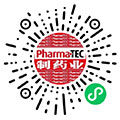GMP数据可以储存在云端吗?
Cloud computing is not a new technology, but a new way of providing resources for data processing.
"Cloud computing is a model that makes it possible,
on demand,
按需
anytime, anywhere and conveniently via a network
随时随地、方便地通过网络
to access a shared pool of configurable computing resources (e.g. networks, servers, storage systems, applications and services),
访问可配置计算资源(例如网络、服务器、存储系统、应用程序和服务)的共享池
that can be rapidly provisioned and with minimal management effort or service provider interaction“.
-
可以快速供应,并且只需最少的管理工作或与服务提供商的交互”。
It is useful to initially think of a "cloud" first as a data centre, i.e. a third-party data centre. However, a regulated company has the same responsibility for the compliant operation of computerised systems as it does in its own data centre – only now the infrastructure and data are located elsewhere.
In principle, the control or management of the data is entrusted to the cloud provider, while the responsibility remains with the pharmaceutical manufacturer. From the perspective of a GMP regulated company, this immediately raises questions about:
data security,
数据安全
data availability and
数据可用性
data integrity.
-
数据可靠性
Cloud models 云模型
Public Cloud
公共云
Community Cloud
社区云
Private Cloud
私有云
Virtual Private Cloud
虚拟私有云
Hybrid Cloud
-
混合云
Service models 服务模型
Then there is the type of service model, and this is where things get a bit complicated. Let me just pick out the most common acronyms:
IaaS——基础设施即服务
This is a computer infrastructure that is provided and managed via the Internet. Companies utilise the computing capacities and pay for the use of the computing power.
PaaS——平台即服务
Here, the company rents a complete operating system or a development environment. The customer is responsible for the applications running on it.
SaaS——软件即服务
Finally, the user company is only responsible for the customer-specific data and access. Many people are familiar with this from SAP or accounting programmes.
As you can see, things were different 10 years ago, and software often even had to be installed on a PC in the company. Today and in the future, we will only access the resources provided. This is also called division of labour – why should a pharmaceutical company be so deeply involved in IT issues when its core competency is drug production?
Cloud-based services are used extensively in private areas (social media, online shopping) and are widely used in retail, banking, entertainment, etc.
These are seen as advantages:
Cost savings
节约成本
Speed
速度
Flexibility
灵活性
Security
-
安全
On the other hand, there are disadvantages that can arise in unfavourable cases:
Penalties
罚款
Downtime
停机时间
Loss of sales
销售损失
Damage to reputation
声誉受损
Loss of customer confidence
-
失去客户信心
However, it is important to remember that when companies decide to keep all applications and data in-house, most of these risks are still present and need to be managed with in-house expertise.
Professional cloud services already cover these risks.
Expertise is always a key factor in the decision to outsource or insource. How much does external or internal expertise cost? The premise of division of labour also applies here.
撰稿人 | GMP-Verlag Peither AG
责任编辑 | 胡静
审核人 | 何发
邵丽竹
何发
热点文章
-
几种典型制药工艺流程图分析
2025-10-11
-
阿司匹林合成工艺及装置改进
2025-10-21
-
《药包材GMP(2025)》与药品GMP深度对比:核心差异、新增要点与实施指引
2025-11-25
-
一文看懂新药研发到上市的全流程
2025-11-25
-
中药颗粒剂生产中的现代化工艺改造
2025-11-04
-
辐照辐照灭菌技术在制药行业中的应用灭菌技术在制药行业中的应用
2025-10-11
-
2025年50家头部药企的竞争格局与核心趋势分析
2025-10-21
-
基于CFD仿真技术的灌装机充氮装置设计优化
本文以某制药产线的灌装机设备为研究对象,采用计算流体动力学(CFD)仿真技术对充氮装置的充氮性能进行分析,并结合分析结果对氮幕结构进行了优化设计。随后,针对优化方案进行性能仿真验证,结果显示优化后的顶空残氧量降低至0.252%。为了进一步验证优化方案的实际效果,将优化方案应用于实际产线进行性能测试,测得的顶空残氧量为0.68%,这一结果满足了小于1%的要求,表明其充氮保护性能已达到国际先进水平。
作者:王志刚、刘依宽、刘佳鑫
-
药品密封性检测 :用户需求与优化
-
可控冻融系统在生物原液上的应用
-
人用疫苗生产数字化转型
-
药包材生产质量管理的进阶策略
-
药厂洁净区域风量和压差的控制策略













评论
加载更多